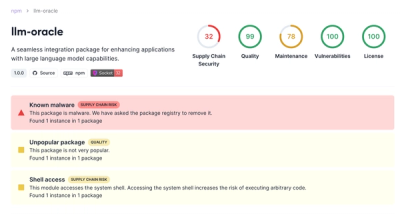Locks
Locks implements locking/synchronization mechanisms that have traditionally
been used for protecting shared memory between multiple threads. JavaScript is
inherently single threaded and does not suffer from these security and
stability issues. However, because of its asynchronous eventy nature JavaScript
can still benefit from making particular operations wait for the completion of
others.
Installation
Node.js users:
npm install locks
Component users:
component install Wizcorp/locks
API
Accessing the locks module:
var locks = require('locks');
Please note that all the examples below will also demonstrate how to unlock
each time. But in general, this matters:
myLock.unlock();
Mutex locks
Mutex locks are the most basic locks which aim to prevent the simultaneous
access to a resource by more than one actor at a time.
more info
Creating a Mutex Lock:
var mutex = locks.createMutex();
Waiting to lock:
mutex.lock(function () {
console.log('We got the lock!');
mutex.unlock();
});
Waiting to lock, with timeout:
mutex.timedLock(5000, function (error) {
if (error) {
console.log('Could not get the lock within 5 seconds, so gave up');
} else {
console.log('We got the lock!');
mutex.unlock();
}
});
Optimistic attempt to lock:
if (mutex.tryLock()) {
console.log('We got the lock!');
mutex.unlock();
} else {
console.log('Could not get the lock at this time');
}
Read/Write locks
Read/Write Locks are used to allow many actors to read from a resource, as
long as nothing is writing to it. That also means that only one actor may be
writing at any given time.
more info
Creating a Read/Write Lock:
var rwlock = locks.createReadWriteLock();
Waiting to read lock:
rwlock.readLock(function () {
console.log('We may now read from a resource!');
rwlock.unlock();
});
Waiting to write lock:
rwlock.writeLock(function () {
console.log('We may now write to a resource!');
rwlock.unlock();
});
Waiting to read lock, with timeout:
rwlock.timedReadLock(5000, function (error) {
if (error) {
console.log('Could not get the lock within 5 seconds, so gave up');
} else {
console.log('We may now read from a resource!');
rwlock.unlock();
}
});
Waiting to write lock, with timeout:
rwlock.timedWriteLock(5000, function (error) {
if (error) {
console.log('Could not get the lock within 5 seconds, so gave up');
} else {
console.log('We may now write to a resource!');
rwlock.unlock();
}
});
Optimistic attempt to read lock:
if (rwlock.tryReadLock()) {
console.log('We may now read from a resource!');
rwlock.unlock();
} else {
console.log('Could not get the lock at this time');
}
Optimistic attempt to write lock:
if (rwlock.tryWriteLock()) {
console.log('We may now write to a resource!');
rwlock.unlock();
} else {
console.log('Could not get the lock at this time');
}
Condition variables
Condition variables allow synchronization between processes based on values.
Creating a Condition Variable:
var initialValue = 'hello world';
var cond = locks.createCondVariable(initialValue);
Waiting for a condition to be met:
cond.wait(
function conditionTest(value) {
return value.indexOf('こんにちは') !== -1;
},
function whenConditionMet() {
console.log('Our welcome message is in Japanese!');
}
);
Setting the value on a Condition Variable:
cond.set('こんにちは世界!');
Semaphores
Semaphores solve the problem of sharing a limited set of resources.
more info
Creating a Semaphore:
var initialValue = 3;
var sem = locks.createSemaphore(initialValue);
Claiming and releasing a resource:
sem.wait(function () {
console.log('We may now access one resource!');
sem.signal();
});
License
MIT



